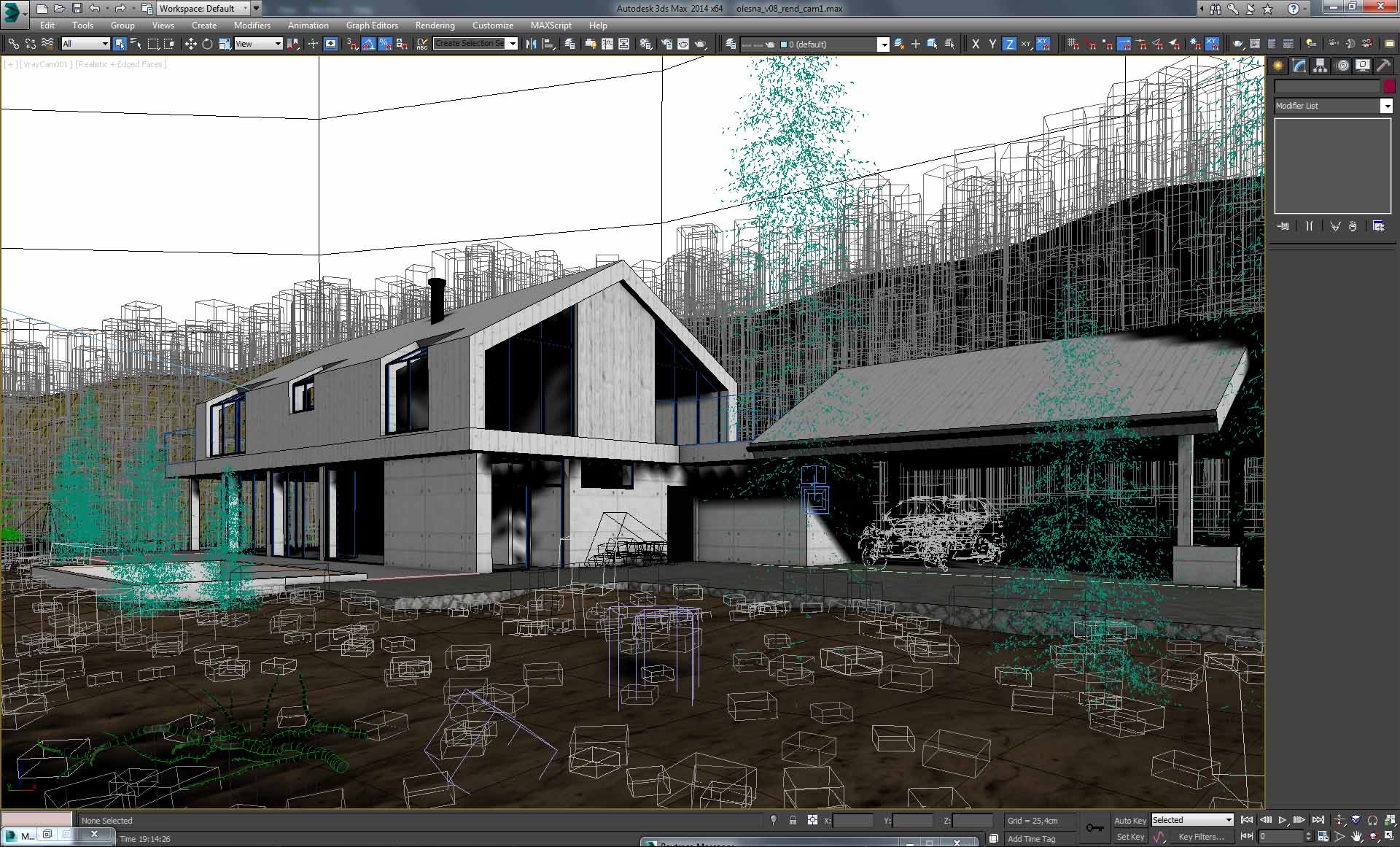
The tree models are FBX files exported from the SpeedTree Modeler and imported via our V-Ray script (the materials are unmodified after that process in this rendering).

The image above was rendered in 3ds Max using V-Ray, a V-Ray sun as the only light source, and a V-Ray physical camera. The export/import process is detailed in the “SpeedTree Pipeline” segment of the documentation organized by the DCC app you are using.

V-Ray support arrives with version 6.2.3 of SpeedTree Cinema, SpeedTree Studio, and our new product, SpeedTree Architect. Even if you want to modify the materials further, the script at least saves a lot of time in the initial setup - and it can be modified to setup the V-Ray materials however you’d like.

Getting the materials correct for your particular renderer requires a significant effort. V-Ray 5’s new VFB gets even more capable with a new Sharpen. Use the new V-Ray Decal to rapidly place materials anywhere on surfaces and other materials without additional UVW mapping work. If you have a 3D model of your design, Lumion can help you bring it to life.
VRAY 3D MAX UPDATE
V-Ray 5, update 2 is packed with features to help you focus on your designs and increase your productivity. Lumion is 3D rendering software made especially for architects. Previously we ran HDRI Haven, Texture Haven and 3D Model Haven as separate independant projects, but ultimately decided we could serve the community better by. This is no small feat - it isn’t enough to simply export an OBJ or FBX file and say you’re done. What's new in V-Ray 5 for 3ds Max, update 2. One of the main challenges of developing a standalone modeling app is making sure it fits in with as many modeling and rendering pipelines as it can.


 0 kommentar(er)
0 kommentar(er)
